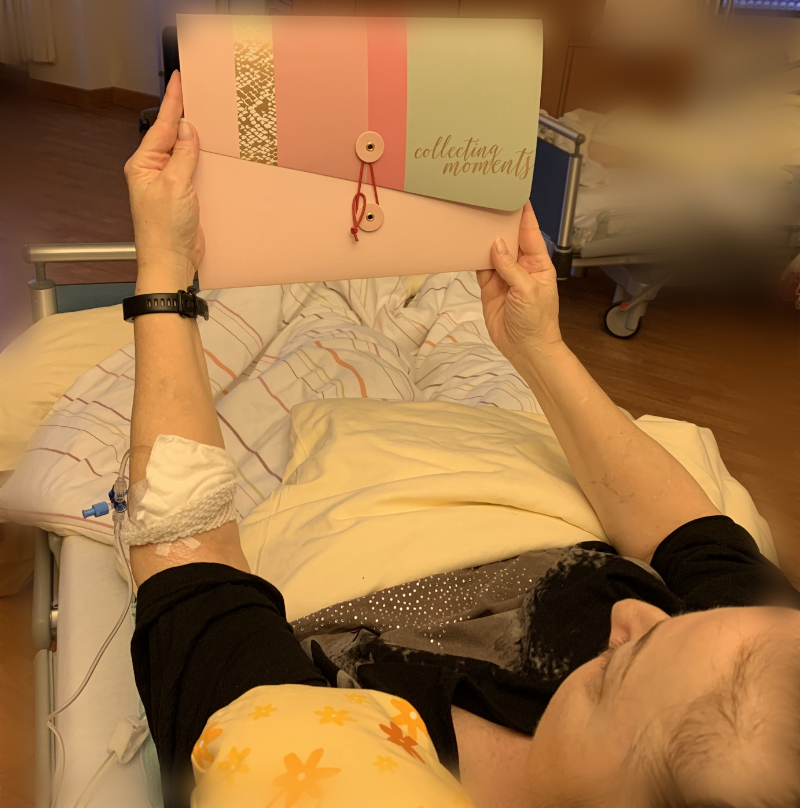The first tip comes from the team at the palliative care unit or hospice; by now they know my work there so well that they have a keen sense of who could particularly benefit from the creation of a palligraphy.

During an initial meeting, I introduce myself and my services to the person. If he or she is interested in taking part, we arrange to meet for an interview. It sounds so formal, but it’s actually ‘just’ a deep conversation between two mortal people, for which neither of us has to prepare. This conversation usually lasts about an hour and is recorded using a recording device.
I then write down the narrative, organise it chronologically or thematically and give it headings. Very important: I don’t change the wording, it’s not about creating a literary masterpiece at this point, but a paper on which family and friends recognise their loved one and say: ‘Yes, that’s exactly how he/she always spoke. Typical!’
At our next meeting, I read this draft aloud in peace and quiet. This is always a special moment for both of us, in which the full power and magic of palligraphy can unfold. If there are any changes or additions to be made afterwards, I will then incorporate them.
At this appointment, we will also discuss what the front page of the booklet should look like and how many copies should be printed. In this way, a very personalised document is created for family or friends, which I eventually hand over in the desired at the fourth and final appointment. When and how the narrator wants to present the document to their loved ones is of course up to them. Some consciously decide to read it together with their loved ones while they are still alive, others only want them to know about it after their death.
In any case, I always try to complete the whole project within a week – in urgent circumstances, this time frame can also be adjusted.
PS: The protection of all personal data is a matter of course. The audio file will only be used for the agreed purpose and will be deleted after transcription.
